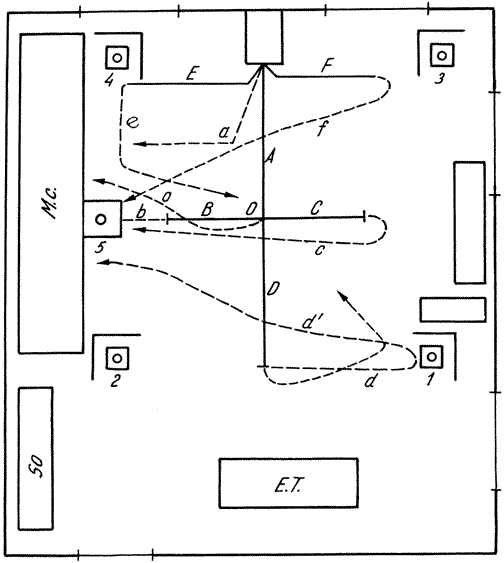ORIENTING MOVEMENT TOWARD A NEW FEEDING PLACE.
J. S. Beritoff, Neural Mechanisms of Higher Vertebrate Behavior, 1965, Little, Brown, and Co.
Orienting movement toward a new feeding place. Cat "Belogrudka" blindfolded. The cat was forced to go 2 meters and then was turned 90 degrees to the right, moved 1.5 meters further and there fed from foodbox 5. After being fed, the cat was returned along the same path. Then, the cat was taken to several other places from which, each time, she went by herself back to the foodbox. On this figure, the paths of the cat's forced movements are represented by solid lines and the spontaneously followed paths by broken lines. The cat chose path a when the cage was opened at its usual place; path b after first being forced along AB; path o after being forced towards O; path e after being forced from the cage immediately to the right along path E; path f, after being forced to the left immediately from the cage along path F; path c after a forced turn to the left along path AC; path d after being forced 4 to 5 meters directly forward from the cage along path AD; path d', same. In these last two cases, the cat at first went to the left to the side of foodbox 1 because she ate very often from this foodbox and presumably had the image of its location, but since she did not find food there, she went directly to foodbox 5.

